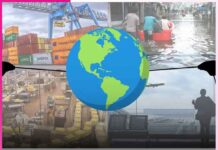Plastic, plastic everywhere.. toys, carry bags, packing accessories, food packets, furniture, storage containers, electronic goods, and so on. list being unending. Plastic has already taken over steel and wood. On one hand it has led to a reduction in deforestation whereas on the darker side it has exposed us to other severe environmental problems. We all are so much used to using plastic for everything in our day to day life that life today seems impossible if use of plastics is excluded.
The discovery of plastic was regarded as a boon but has now transformed into a bane to the earth and the existence of life. The major problem with the plastic is its disposal. It is normal for the items made of plastic to degrade, wear and tear with prolonged usage. For instance the carry bags and packets of wafers and biscuits are not used repeatedly to store these items; any plastic furniture becomes brittle in due course of time and these are obviously discarded.
These are often subjected to get into drains thus clogging them or if they pass through they are transported to water bodies thus creating a threat to water flora and fauna. If these remain on land and are buried in the soil these degrade the soil fertility as well as the seepage of rainwater into the ground water as these are not biodegradable.
Also Read: 40 lac saplings planted..
The vast field of applicability of plastic is because it is lightweight, flexible, leak proof and has resistance to acid in addition to that its manufacturing cost is low. Plastics are manufactured synthetically using coal, natural gas or mineral oils. Plastics consume approximately 4-5% of the oil and gas produced globally. The semi-synthetic plastics are produced from natural polymers like cellulose.
These days’ organic plastics are manufactured in large amounts using sustainable raw materials. The most widely used plastics are PVC, PET, polycarbonates, polypropylene, polyethylene, polyurethane and polystyrene. All these types of plastics contribute the most to the increased usage and implacability of plastic in almost everything in day to day life.
Drainage pipes, tubes, flooring, swim rings, baby products, seals, window profiles, records etc. are the objects that are manufactured using PVC (polyvinyl chloride). PVC is manufactured from vinyl chloride which is chloroethene gas and is basically a stiff type of plastic. In order to provide elasticity to this plasticizers are added to it. It is highly resistant to fire with insulating properties and very strong because of which they find wide applicability. But it comes with the price of release of poisonous dioxins when burnt, carcinogenic raw material and dangerous phosphates.
Related Article: J C Bose Who Proved Plants, Trees Also Feel Pain.
Bottles, cosmetics and food packaging, household appliances, medical implants and safety belts etc are made from PET (polyethylene terephthalate). It is impact resistant, lightweight and transparent in their amorphous state and hence are primarily used for manufacturing water and soft drink bottles. Since it is tear and crease resistant, water repellent. Although it is recyclable, the adverse impact associated with its antimony and acetaldehyde are released from the PET bottles into the liquid contained in it.
Eye lenses, CD’s, DVD’s, electronic goods, helmets, automotives etc use poly-carbonates. Even though they are expensive, polycarbonates hold a great deal of importance because of its peculiar properties and is used only if needed. It has low resistance to chemicals but is shatterproof translucent, colourless and impact resistant making it the perfect choice to be used by optical industry. But it consists of Bisphenol-A which is considered harmful for health.
For producing electrical appliances, packaging of food articles, plastic bags, medical apparatus, artificial lawns, automotives, suitcases and furniture for garden, polypropylene i.e. a thermoplastic is used. But it is susceptible to ultraviolet degradation, is poorly resistant to aromatic compounds and chlorinated solvents and susceptible to oxidation.
In production of buckets, bowls, bottles, barrels high density polyethylene (HDPE) is used whereas for wrapping foils, tubes, cable coverings and plastic bags linear low density and low density polyethylene (LLDPE & LDPE) are used. It takes longer duration of time to break down & does not degrade fast in the soil. When incinerated it emits harmful gases in the atmosphere.
Polyurethane (PU) is used to manufacture seats for cars, mattresses, thermal insulation, kitchen sponge, for preventing rust in automobile industry, textiles, adhesives and in coating floors and furniture. It is mainly manufactured in form of foam. The soft foam is used for production of upholstery while the hard foam in building industry. But to its disadvantage it is hard to recycle it and it releases poisonous substances like isocyanates and hydrocyanic acid after combustion
Polystyrene is used in the production of insulation for electric cables, electrical appliance’s casings, thermal insulation, containers for yogurt, insulating packaging material and packing foils. It is produced in form of foam which in trade world is called as Styrofoam. It is brittle, hard and has glass-like, shiny surface. While its production and processing takes place many carcinogenic substances are released and it is also hard to recycle it.
Studies conducted hold the result that plastics pose a severe threat to freshwater as well as marine ecosystems. As plastic is cheap, strong and multi-utility item and provides various positives for the society like saving energy, innovation in health-care, the plastic pollution is taking a toll. Significant attention must be paid towards the proper usage as well as the disposal of discarded plastics in order to minimize this problem.
Follow us on Facebook, Twitter, Instagram, and YouTube to get more updates related to Sachi Shiksha – The Famous Spiritual Magazine in India. Also Read Our Hindi and Punjabi Editions.














































